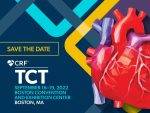We are well aware of the benefits of Fractional Flow Reserve (FFR) to assess coronary artery stenosis. FFR after PCI (post-PCI FFR) has been shown to have prognostic value; however, few studies have included patients with complex three-vessel disease. The impact of intravascular ultrasound (IVUS) or optical computer tomography (OCT) in this field has been...
RIPCORD 2 Study: Routine Assessment Using Pressure Wires in Acute Coronary Syndrome
The inclusion of fractional flow reserve (FFR) has changed how coronary interventions are treated. Current guidelines endorse its use in intermediate lesions with no evidence of ischemia in non-invasive studies in patients with multivessel disease. The original RIPCORD (Routine Pressure Wire Assessment Influence Management Strategy at Coronary Angiography for Diagnosis of Chest Pain) study proposed...
Coronary Bifurcation Lesions: MRS or PCI? 10-Year Mortality of the SYNTAX Study
Percutaneous treatment of coronary lesions affecting bifurcations has increased in recent decades. Coronary angioplasty (percutaneous coronary intervention, PCI) in these cases is associated with an increased rate of adverse events in patients with multivessel disease and left main coronary artery lesions. The SYNTAX score, which is a predictor of total mortality, is used to evaluate...
Using Biolimus-Coated Balloons for Treating Small-Vessel Disease Yields Promising Results
Drug-eluting balloons have demonstrated safety and effectiveness in the treatment of small-vessel coronary artery disease and in-stent restenosis. However, randomized studies were performed using paclitaxel. Several studies have shown that using biolimus, a semisynthetic analog of sirolimus, optimizes drug delivery in both stents and balloons. The aim of this randomized, multicenter study was to evaluate...
Revascularization Using DES in Infrapopliteal Disease: Meta-Analysis and Change of Paradigm?
Peripheral vascular disease (PVD) has been under-studied and under-recognized in comparison with ischemic heart disease and stroke, despite its well-known impact on quality of life and its associated morbidity and mortality. According to a systematic review, it was estimated that in 2015 about 238 million people globally had PVD. This number is on the rise....
Coronary Angioplasty Evolution According to Syntax II: 5-Year Followup
It has been long since the SYNTAX (NEJM 2009) came out comparing percutaneous coronary intervention (PCI) against coronary artery bypass grafting (CABG). That emblematic study associated PCI with first generation drug eluting stents (Taxus) with increased major cardiac and cerebrovascular events (all-cause mortality, AMI, stroke, or any revascularization – MACCE) vs. CABG, at 5 years,...
In Multivessel Disease, When Should Renal Impairment Be Considered?
Cardiovascular disease is one of the main causes of morbidity and mortality in patients with advanced chronic kidney disease (CKD), and vice-versa. Both diseases share risk factors, including, but not limited to, diabetes, high blood pressure, smoking, dyslipidemia, and old age. As kidney disease develops, its severity grade has been linked to more thrombotic events...
Is Coronary Revascularization Useful in Renal Transplant Candidates?
Coronary artery disease is the main cause of death in patients with functioning renal transplant, reaching 30%, with the highest rate at peri transplant stage. At the same time, the incidence of acute myocardial infraction (AMI) after renal transplant ranges from 5% to 11%. This is why asymptomatic candidates are routinely screened for CAD before...
The Most Relevant of 2021 In Structural Heart Disease
This last year, new data in structural heart disease gave way to changes in practices and new hypotheses, when not simply further justified the already existing evidence. In this new editorial section, we share the most relevant of last year’s works to keep you up to speed on the main topics in the field. The...
AHA 2021 | RAPID CABG: Safety of Early Surgical Intervention in Acute Coronary Syndrome
Suspending ticagrelor a couple of days before surgery was non-inferior to waiting 5-6 days in terms of bleeding in patients with acute coronary syndrome (ACS) requiring myocardial revascularization surgery. Patients who waited longer had more ischemic events and longer hospitalizations. Current American guidelines recommend waiting at least 5 days before operating on patients with ACS who...









